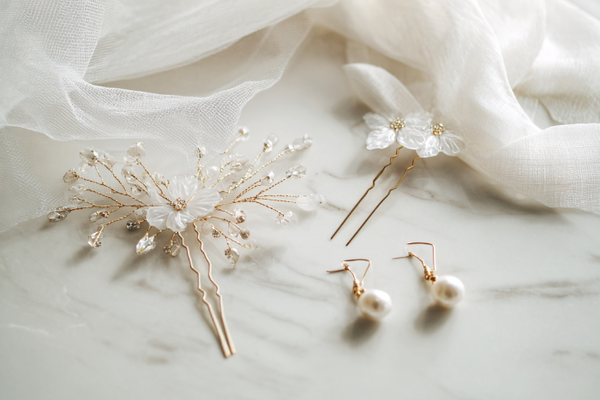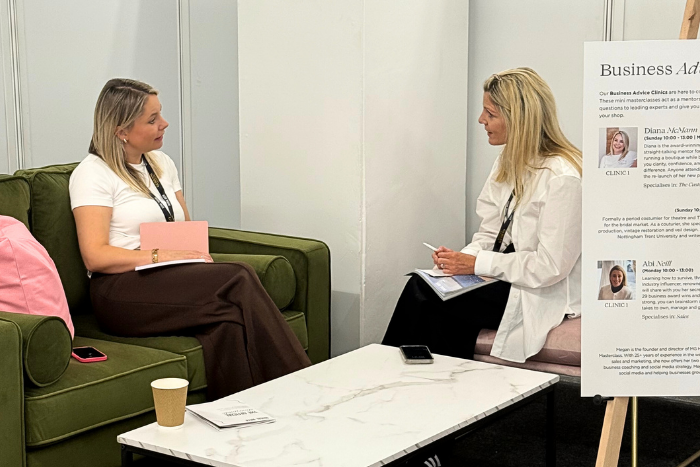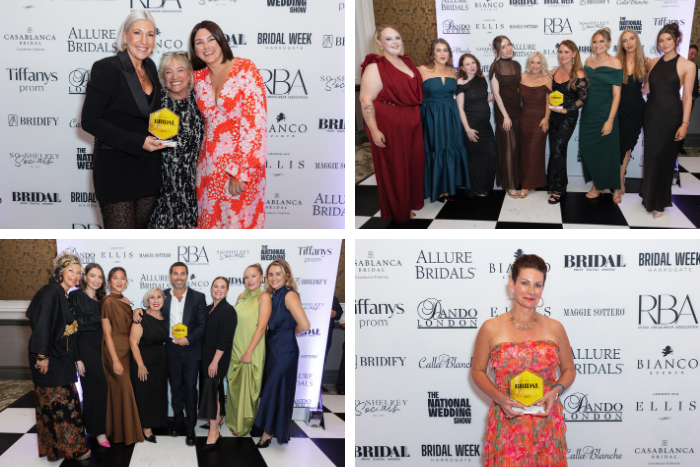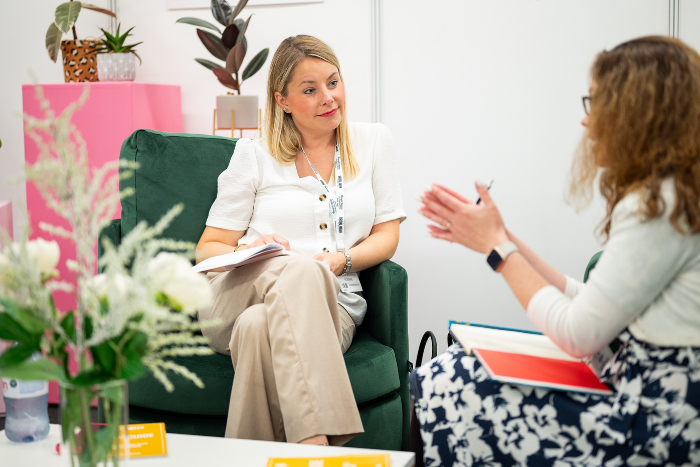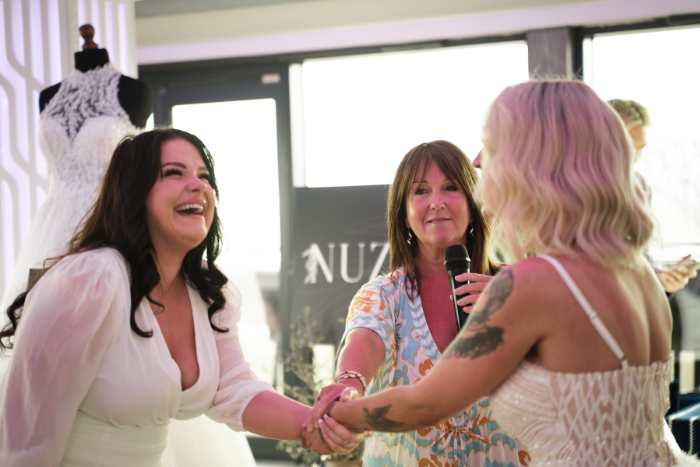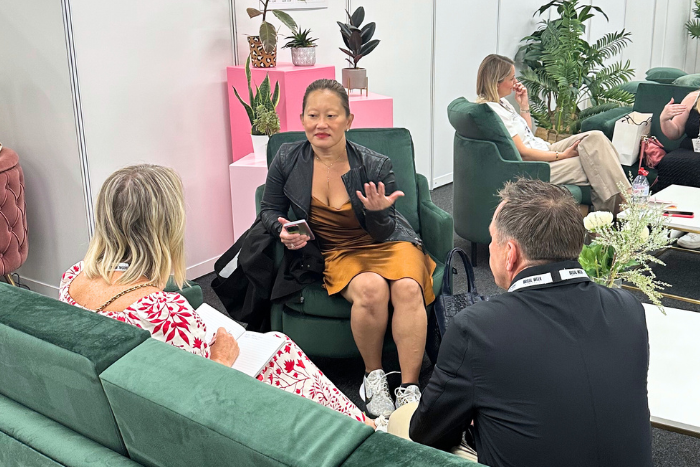Abi Neill on Business Measures
The face of the bridal industry has changed a great deal over the past few years – brides are demanding more and more – so how can you keep up?
To put it succinctly; it’s tough out there, we’ve felt it within our bridal and menswear business in Essex and so have retailers in other areas of the UK that I coach. But look, I want to reassure you, it’s not all bad. Brides and grooms are most definitely still out there wanting what you can sell, still drawn to memorable and personal boutique shopping experiences and still searching for companies that can offer beautiful products at the right price for their individual, instagrammable wedding journeys.
Read More: Abigail’s Collection & The Groom’s Room wins UK Drapers Retail Industry Oscar!
So what does this mean to the open-minded, optimistic bridal boutique owners amongst us? Well, it’s time to knuckle down and focus on what is working, its time to identify the lucrative aspects and its also time to enhance your boutique, your products and services.
Since I began B2B coaching last year, I’ve been surprised at how many of us fly by the seat of our pants. In some ways it’s commendable and whilst a glitzy reception and a tonne of gorgeous gowns is a great start, it’s important to measure what’s working and collate stats so you can review your operation and make informed business decisions as you progress.
If you’re lucky enough to be relatively new to bridal you’ll perhaps not be suffering from the comparative ‘Oh my goodness it isn’t what it used to be’ syndrome. And for those of you who have been throwing that conversation around in between gins; hell no! It is not what it used to be – it is different, customer needs are different, their financial spend is different and what matters to them is (wait for it) ‘different’.
Understanding what the customer wants and how customers behave is everything and you’d be wise to tune in. At the heart of it, customers want to feel cherished, supported and celebrated and that’s a crucial part of what we must offer, but what you measure within your business is fundamental to how successfully you will grow.
Some accountancy and bridal software packages can help with this (the analytical numbers stuff) but alternatively, create some simple spreadsheets and get analysing yourself. It’s never too late to start number crunching within your business.
Read More: Chris Partridge takes a look at the software you need to help get your money in order.
What To Measure
Turnover / Gross Profit / Net Profit (by product area and by year)
You should have a handle on these numbers. You should know your break evens. Your Accountant can help you assess the numbers and you should be reviewing them at least quarterly.
Appointment Activity & Conversion Rates
An obvious area to measure although many business owners don’t. Monitor the number of appointments and footfall versus the number of sales units. Add to this a calculation for conversion rates. We divide the number of individual brides we see (count them only once) by our unit sales (ignore second try ons). E.g. If I saw 10 brides and sold 5 wedding dresses, the conversion rate is 50%.
An average performing bridal boutique converts between 25% and 45%, a less than average boutique converts less than 25%, and a high-performance boutique converts upward of 50%. FYI – Within our business, any individual stylist who consistently converts at less than 40% is retrained and ultimately taken off bridal sales if we cannot improve sales performance.
Ensure you calculate individual conversion rates for staff appraisals and in order to recognise and reward performance. Improve your overall sales conversion with sales training and by frontloading your customer experience before your customers arrive in-store. Sell more dresses with better prequalification of your customers before the sales appointment.
Product Sales Analysis (size, style, colour)
Unless you have software to capture this you should keep a running tally on exactly what you’re selling, which brands are best-selling and in which size and colour. This is important because you need this information for buying. It will help you spend your money wisely and select the size of your samples more efficiently. With this information, you can improve your stock turn and sell more off the peg. Avoidance of dead stock building is extremely wise these days.
Product ROI (return on investment)
This isn’t always as straightforward as it seems but it is imperative that you measure it for each label and product area. Some would say that you should sell at least three times as much as you buy (per label). So if you buy 10 samples you should be selling at least 30 a year to justify the rail space. But some of your lowest repeating labels could actually be the appointment drivers for your shop because of their marketing power - so take care not to eject labels that are powerful in other ways. In addition, private labels with no brand awareness could generate excellent margins and a favourable return without the pressure of minimums.
Read More: How to Choose an Accountant
Venue & Supplier Analysis
Analysing where your customers are actually getting hitched (abroad or at home) is extremely worthwhile. Building strategic partnerships with venues and other wedding suppliers that your clients are using is also key to building a powerful wedding business community. You can drive specifically relevant social media content with this info and build relevant relationships in order to connect more deeply with your customers.
Lead Analysis
Where do your customers come from? Is it word of mouth, Facebook, venue referral or another source? Ask, capture and analyse this data so that you know where to focus your marketing efforts and drive more of the same. We all know that print marketing isn’t as effective as it was but if you do splash out on print advertising measure the results using tracking numbers.
Google Analytics
You can lose yourself for hours in Google analytics assessing and measuring website visitor activity. In order to max on SEO it’s wise to ensure that someone gets to grips with some this information for you. Just another thing to add to the never-ending to-do list, I know!
Read More: Make Sure You’re SEO Savvy
Customer Feedback
Obtaining and measuring customer feedback is also a worthwhile activity. Asking for feedback on what can be improved and what your customers would like to see changed is potentially more important than asking what they loved about their shopping experience! Be sure when asking for feedback to invite ‘any other comments’ in an unstructured section.
Multi-award-winning retailer Abi Neill is available for coaching and advice, visit her website here for more information.


